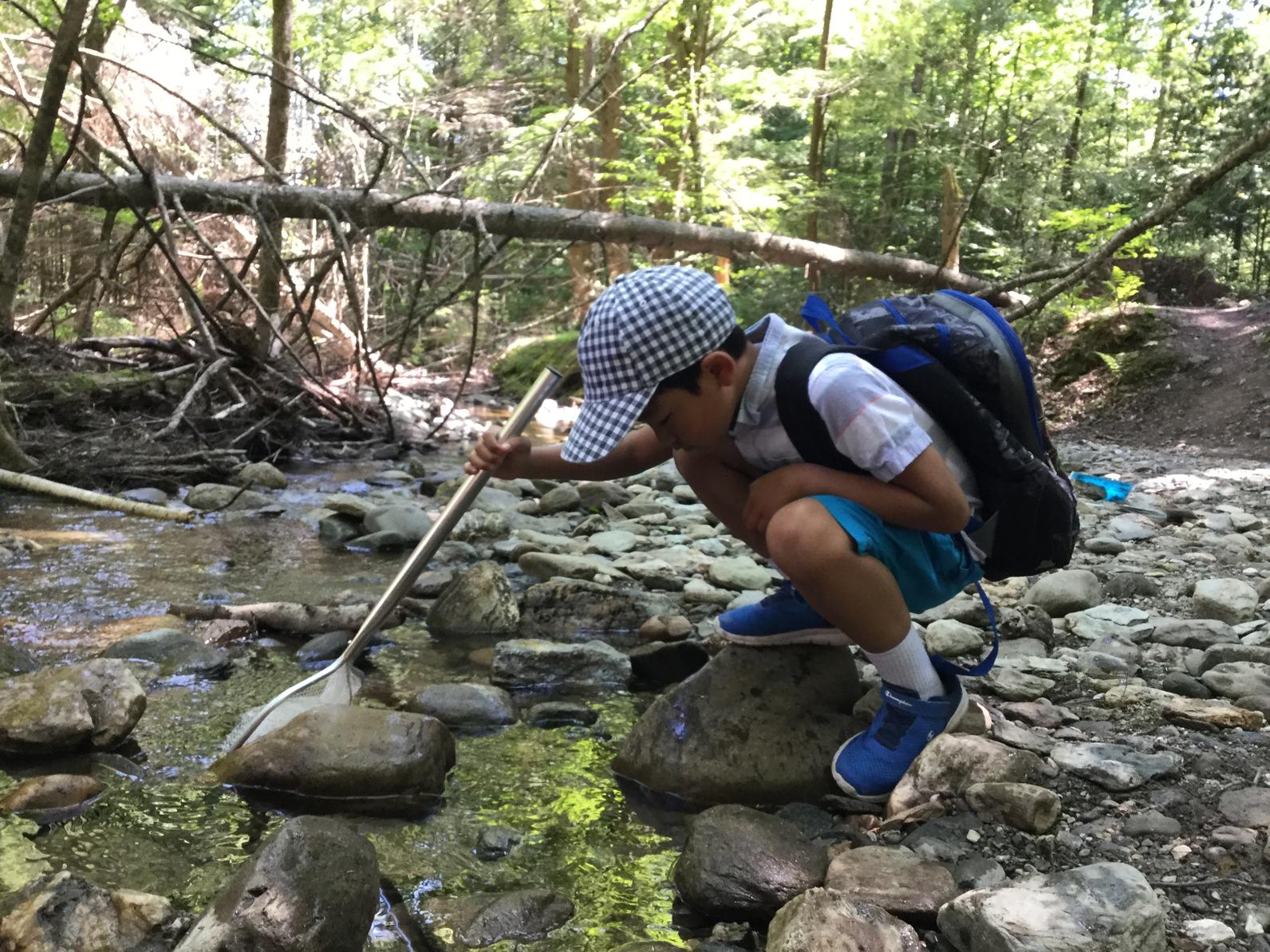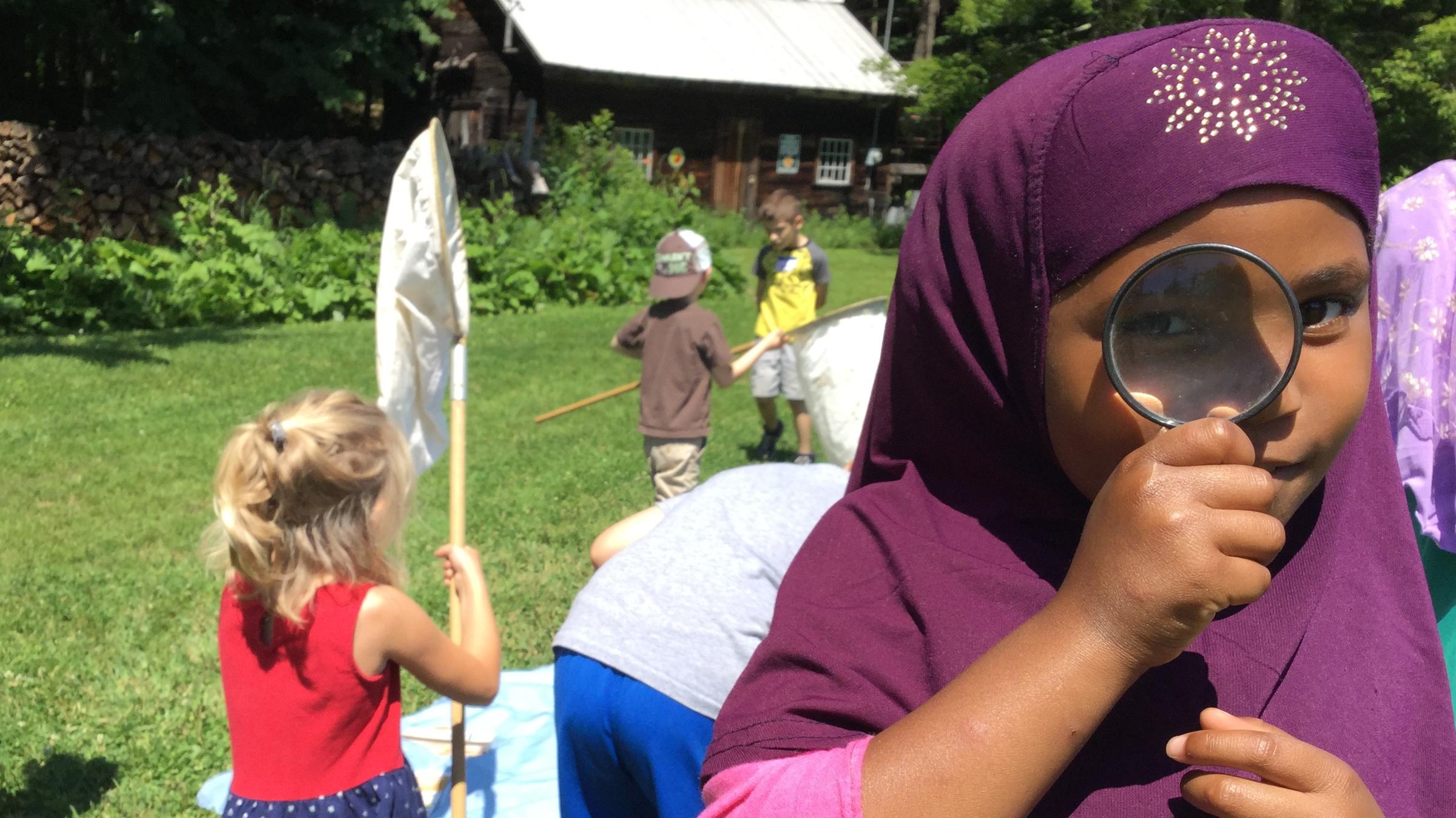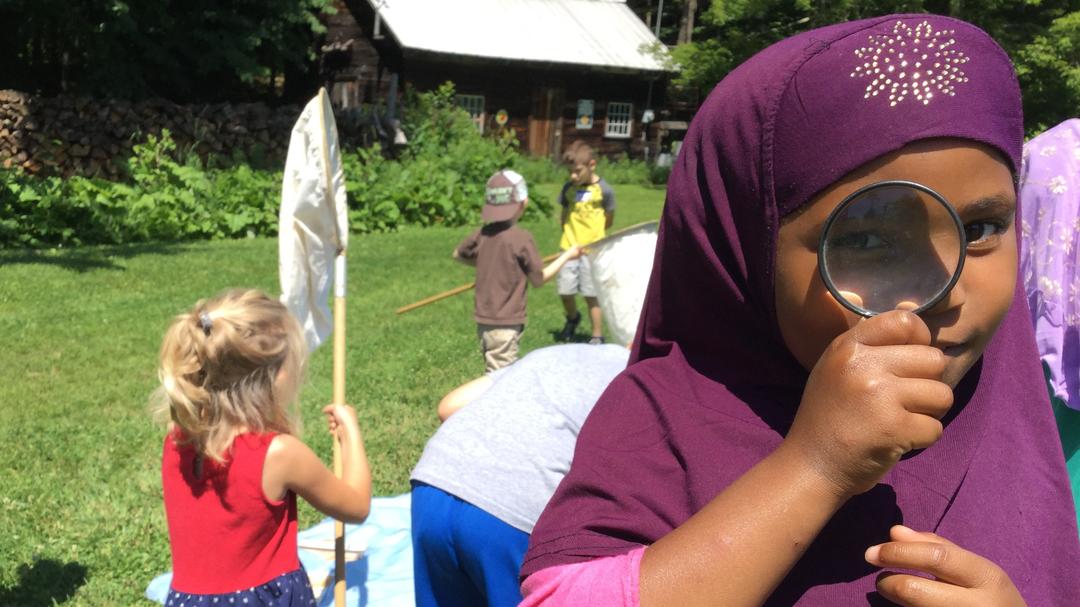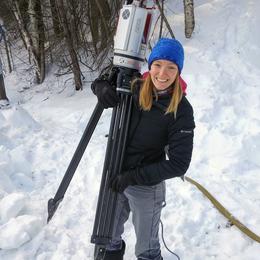Hannah Weiss is Audubon Vermont’s UVM Conservation Education Fellow for 2019, a position which involves broad participation in the organization’s many conservation and nature education initiatives. These articles are part of a series of “field notes” pieces, written to give the community a fellow’s-eye view of the exciting and important work being done by Audubon Vermont every day.
HUNTINGTON, Vermont (July 10, 2019) -
This week I step into the educator role as three school groups from the Burlington School District visit Audubon to learn about insects.
The group, SOAR (Summer Opportunities and Academic enRichment), is a Burlington-based summer school program where elementary schoolers practice reading and math and attend field trips. Over the course of three days, we will see their kindergarten, first, and second grade classes.
Monday is kindergarten day. At 10 am a white school bus pulls up to the lower parking lot and 30 kids unload. I feel my heart beat increase as the children’s voices in the distance swell. Today I am shadowing Debbie and Gwen as they teach Audubon’s insect program.
A swarm of brightly colored hats and loud voices walk to the field, drop their lunch boxes and coolers off, and we began the day by circling up.
Debbie Archer is an Audubon Teacher/Naturalist and our Education Program Coordinator. From what I’ve observed, she hits the perfect balance of relaxed and authoritative and I learn every time I watch her interact with youth. She welcomes the group of 30 kids and is able to quiet them and engage them all at the same time by asking, “If Audubon is a place that protects birds, but we’re here to learn about insects, then what do insects have to do with birds?”
Kids’ hands shoot up. They know this one. Debbie calls on a particularly wiggly student. “Birds eat insects!” they declare proudly. The educators smile. Yes! Connections!
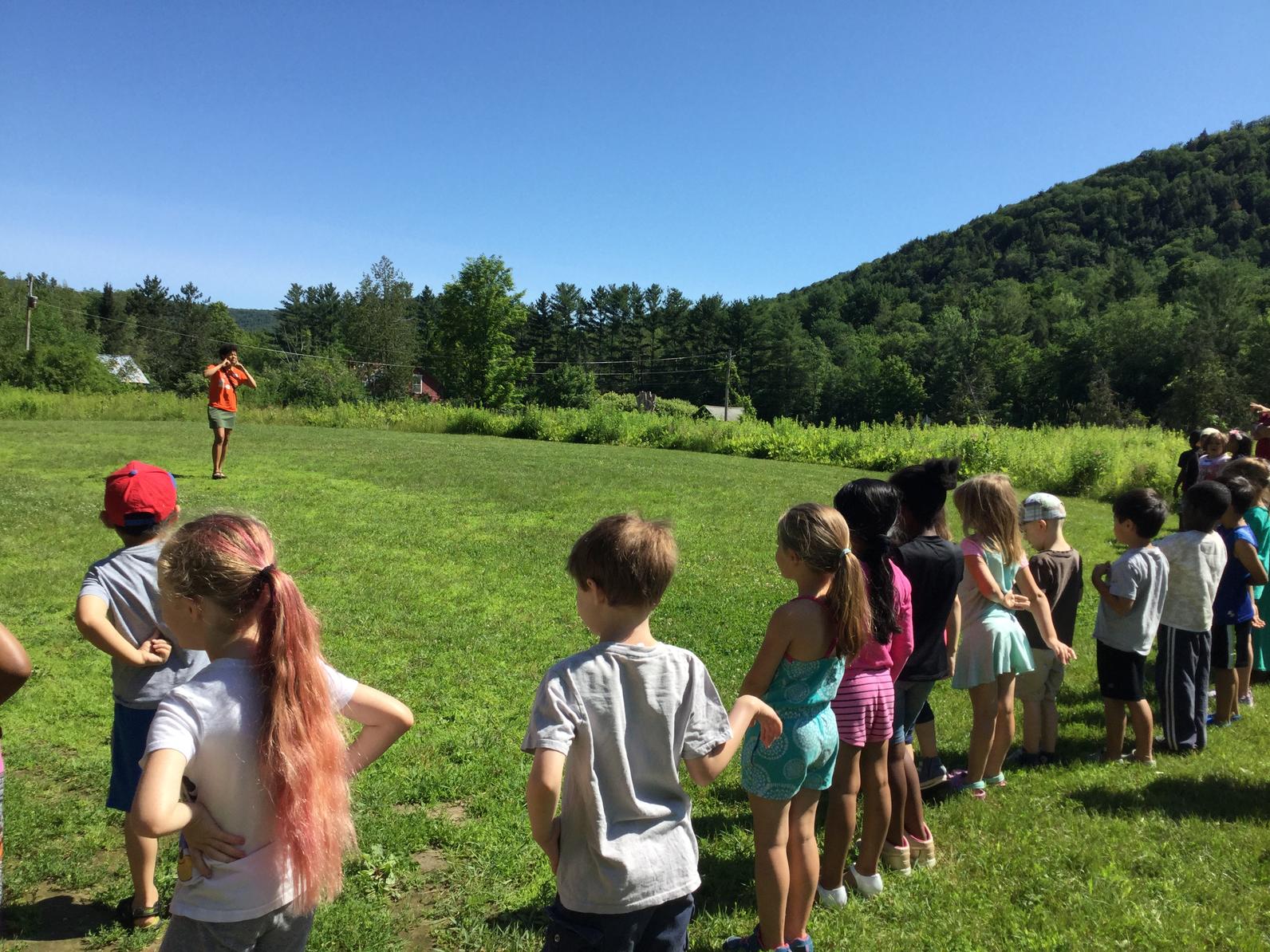
We break into two groups and one group follows Debbie. The other, along with me, follows Gwen.
Gwen Causer is another Teacher/Naturalist for Audubon and is also our Communications Manager. If you’ve ever received an Audubon update email, likely you’ve already read her work. She has a plethora of tricks to keep kids engaged and focused and instantly introduces the kids to the sensory experience of hearing bird calls. “Whenever you hear a bird call, point towards the bird!” The kids love it. She shows them how to cup their hands around their ears – “owl ears” – so they can listen better. As we walk, I see various kids cupping their hands around their ears and excitedly pointing in various directions.
We first head to Sherman Hollow Brook, a meter-wide, 10 cm deep, stream that eventually flows into the Huntington River. The stream meanders, bread-loaf sized stones facilitate hopping from side to side, and tall hemlock trees rim the banks. It’s a shady, cool spot on hot days. Gwen opens with a water safety run-down and some boundary definition. Then we move into the hands-on portion. Equipped with small yogurt cups and nets, the kids take to the stream in search of creatures.
In the past we’ve found salamanders, crane fly larvae, damselfly nymphs, water striders, and even a crayfish. Today, the kids shriek when they discover something that wiggles. We look at laminated identification guides to figure out what the alien-looking creatures are in our big “look-don’t-touch” bucket.
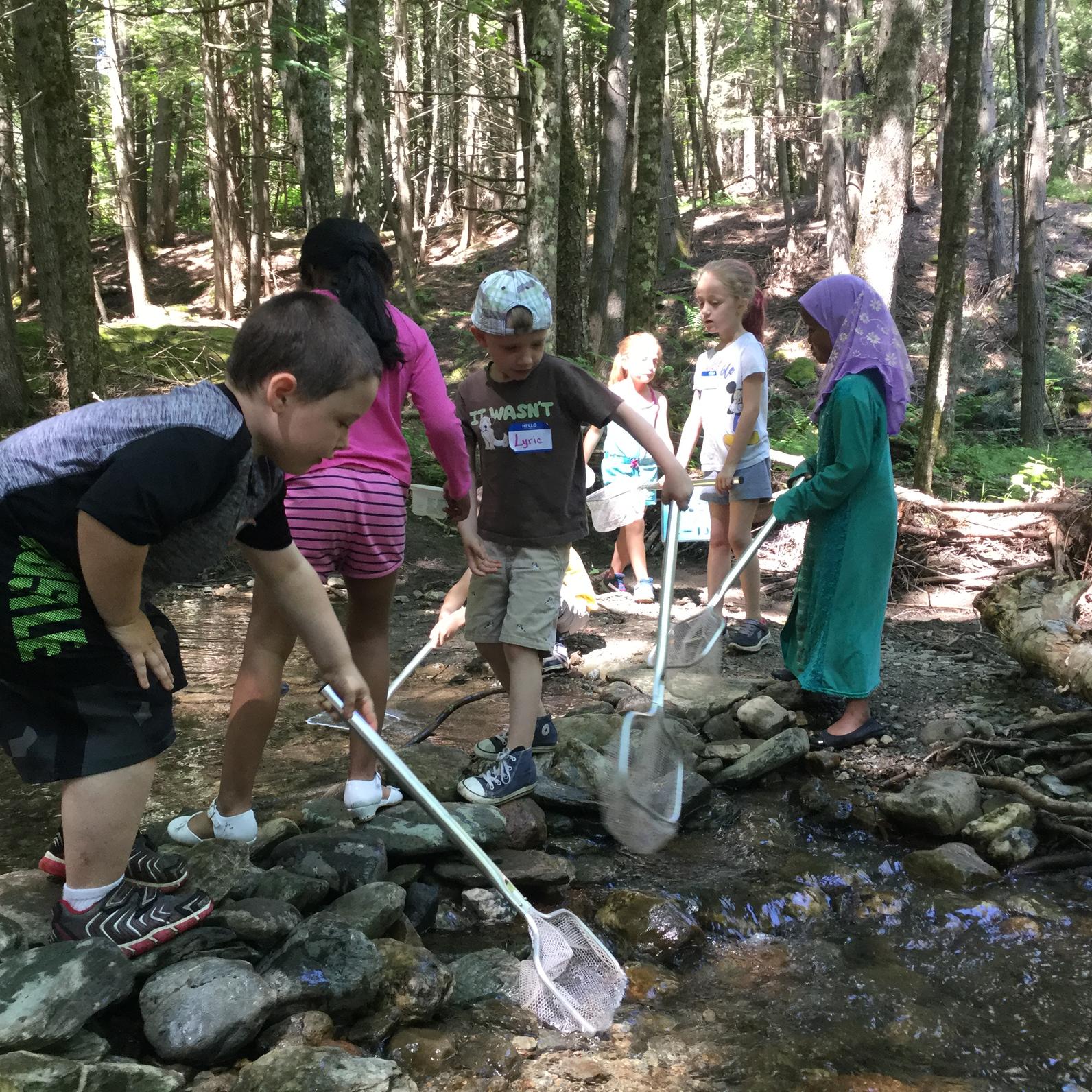
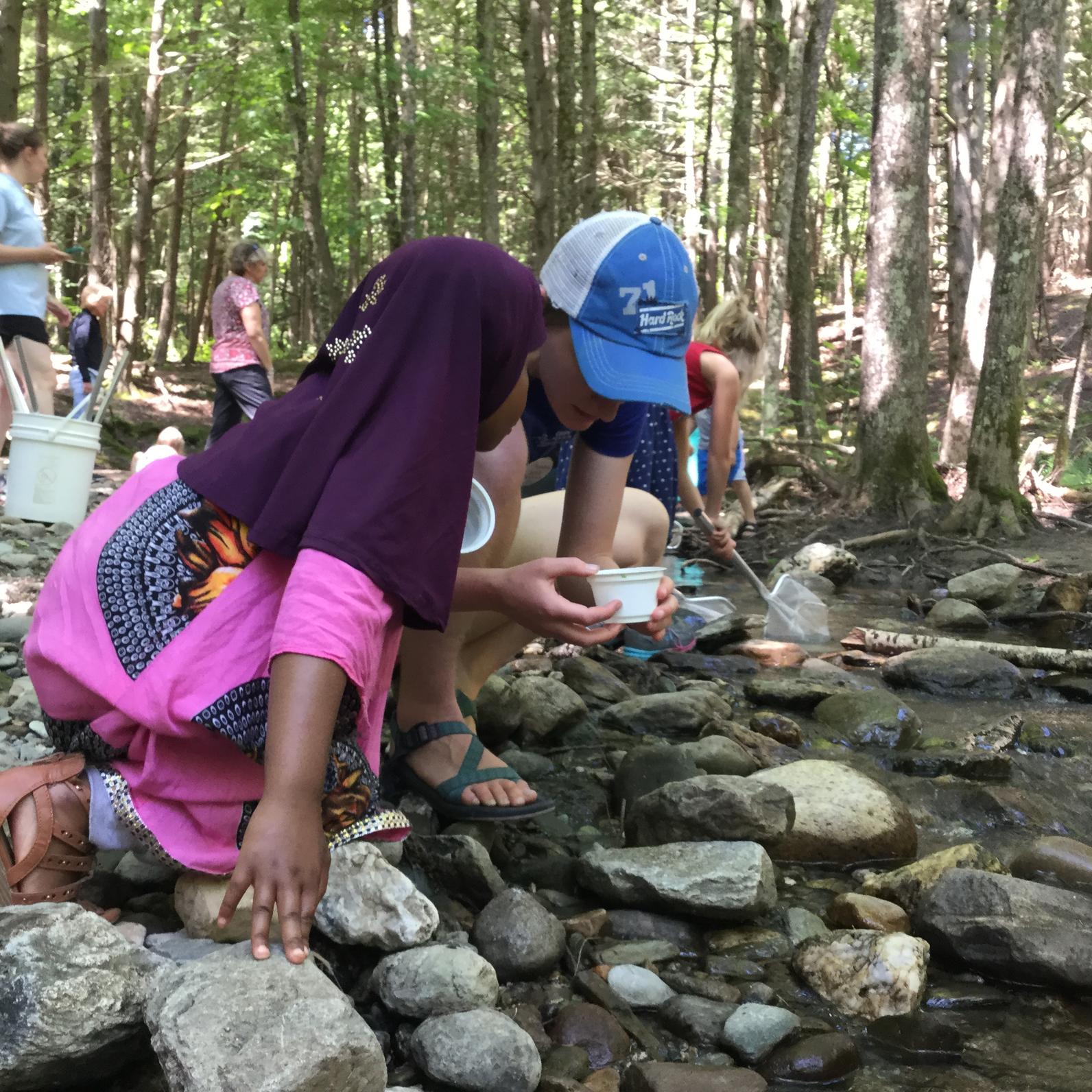
After the brook, we head to our next station. We take our time in the forest, pointing out birds we hear and answering questions about various bugs we see or leaves we’ve found. It’s an amazing experience to watch the transformation that occurs when kids are released into the woods. Many of these kids are inquisitive, excited to be outside, and want to know the whys and hows of everything.
The field is the next stop.
“What insects do you think we’ll find out here?” Gwen asks the kids. “Butterflies!” one yells, pointing at a swallowtail butterfly lazily flying through the taller grasses.
We spread out a blue blanket (the “look-don’t-touch” blanket), distribute sweep nets to pairs of kids, and set them loose. Within a couple minutes, I hear yells. “We caught something!”
I make my way around the groups, looking into their nets. Usually they find smaller bugs and flies, however some of them have larger (more interesting) bugs. A three-centimeter-long red bug with black spots is crawling around one of their nets – it’s a milkweed beetle.
“Do you know what milkweed is?” I ask. They shake their head no. “Have you ever seen a monarch butterfly?” This question sparks recognition. Their faces light up. “Yeah!”
“Well,” I explain, “the monarch butterfly needs milkweed to survive. It’s the plant with the purple flowers!” Throughout the next couple minutes, I quiz the kids on which plant was the milkweed plant – and they all point it out correctly!
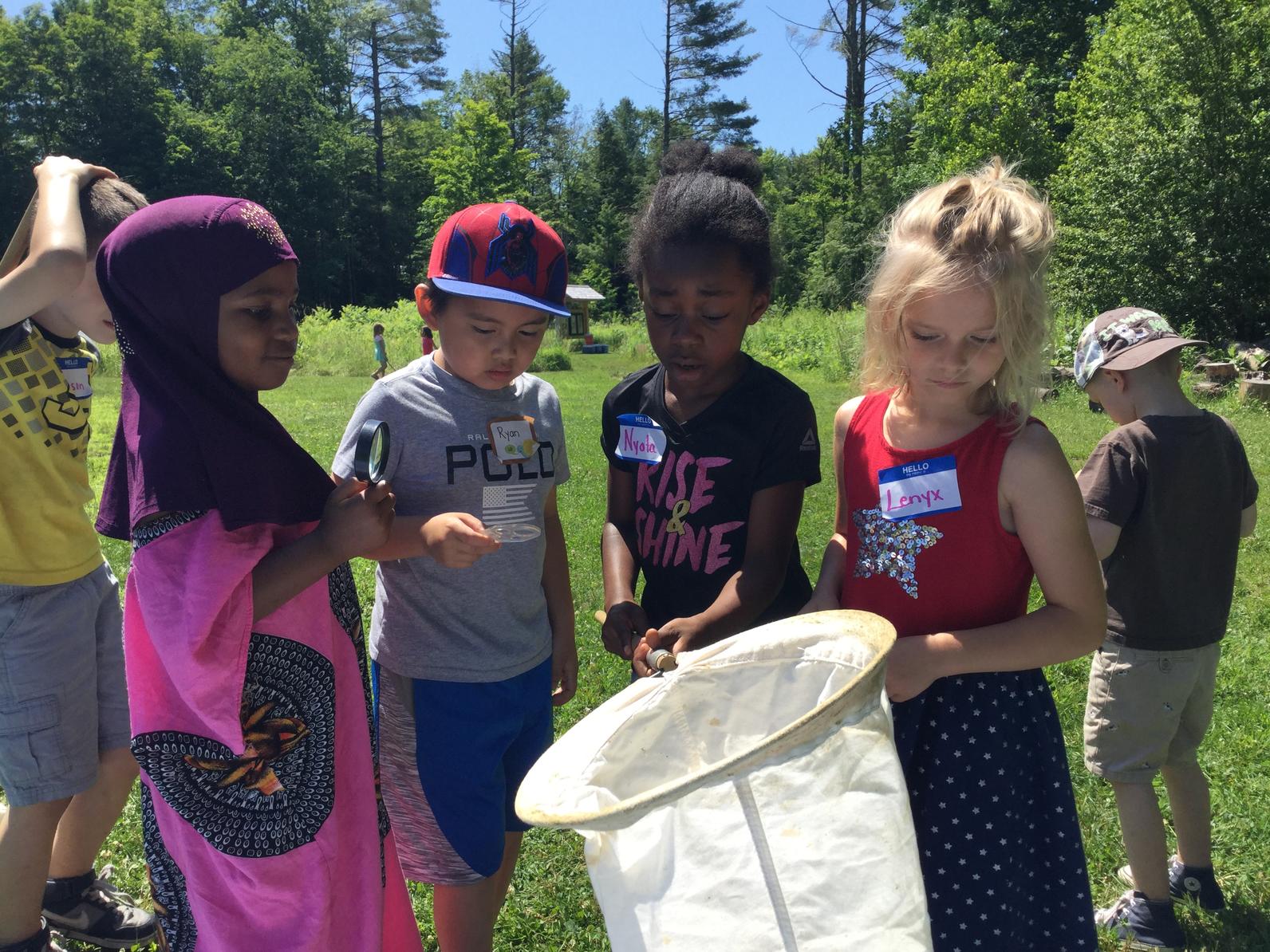
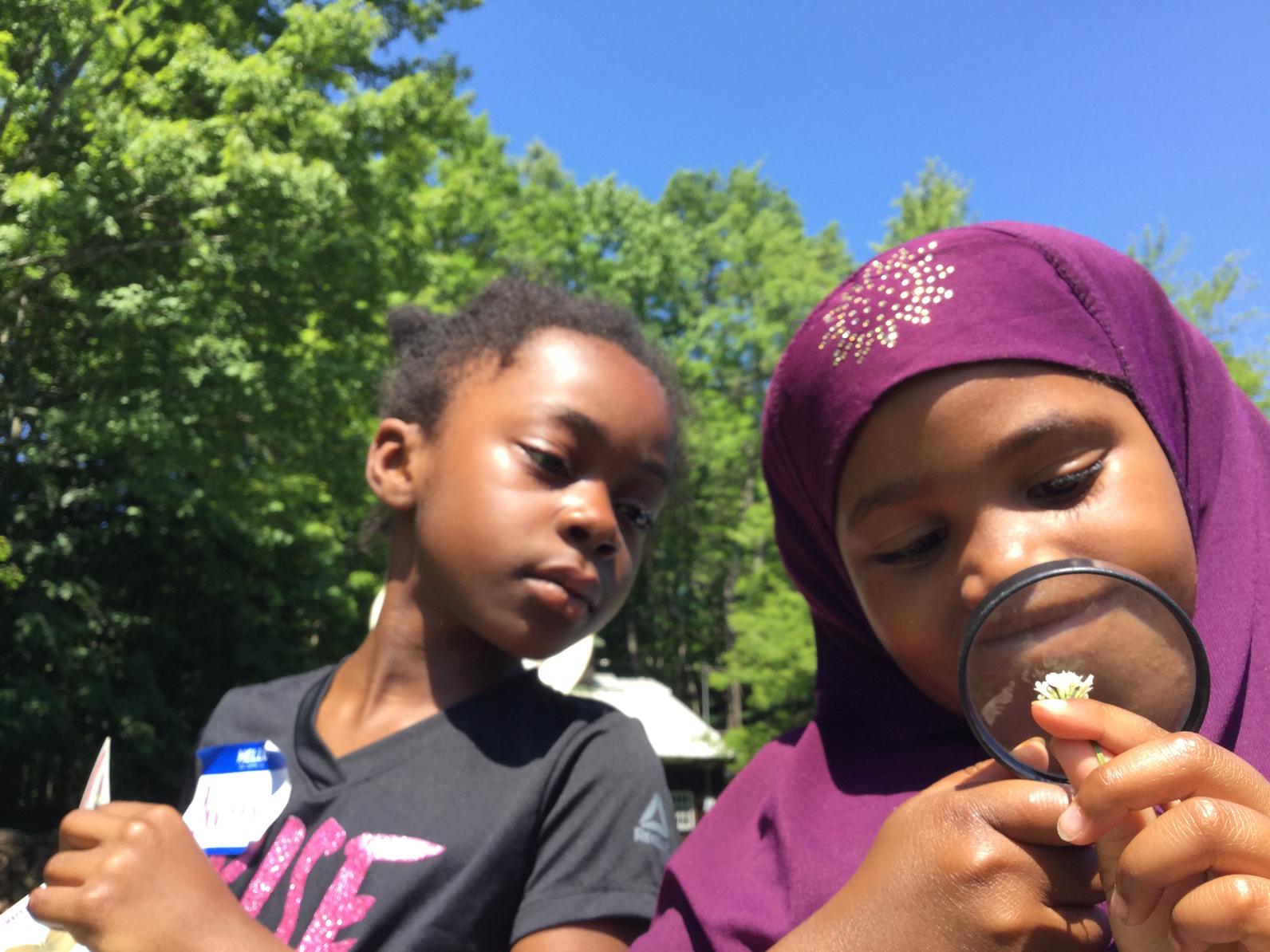
The field portion concludes as the day begins to heat up and the kids head to lunch. I hang back with Debbie and Gwen to discuss the lessons of the day. The following days, I will transition into a teaching role.
Tuesday opens with a heatwave and high humidity. First graders are coming today and I’ve already mentally prepped games to keep kids focused and my talking points about insects in each ecosystem we’ll visit.
Once the kids arrive we begin with a fun “Dress-a-Monarch” game to teach the kids about what makes an insect an insect (hint: 6 legs, a head, thorax, abdomen, antennae, compound eyes, and sometimes wings!). We put different costume pieces on a willing volunteer to illustrate each of these insect body parts and the kids laugh upon seeing their classmate dressed as an insect.
We begin the day in the field and set the kids loose with sweep nets. This activity does not last long as everyone wilts in the high heat/humidity, so we transition to the shade and coolness of the forest to learn about insect camouflage. We have hidden plastic insects along a three meter section of trail, and after discussing what camouflage is, we ask the kids to find all the hidden “camouflaged” creatures. Eagerly, they race to discover the brightly colored creatures and we discuss why some may be harder to find than others. “If it’s green!” shouts one student, “If it’s too small!” yells another.
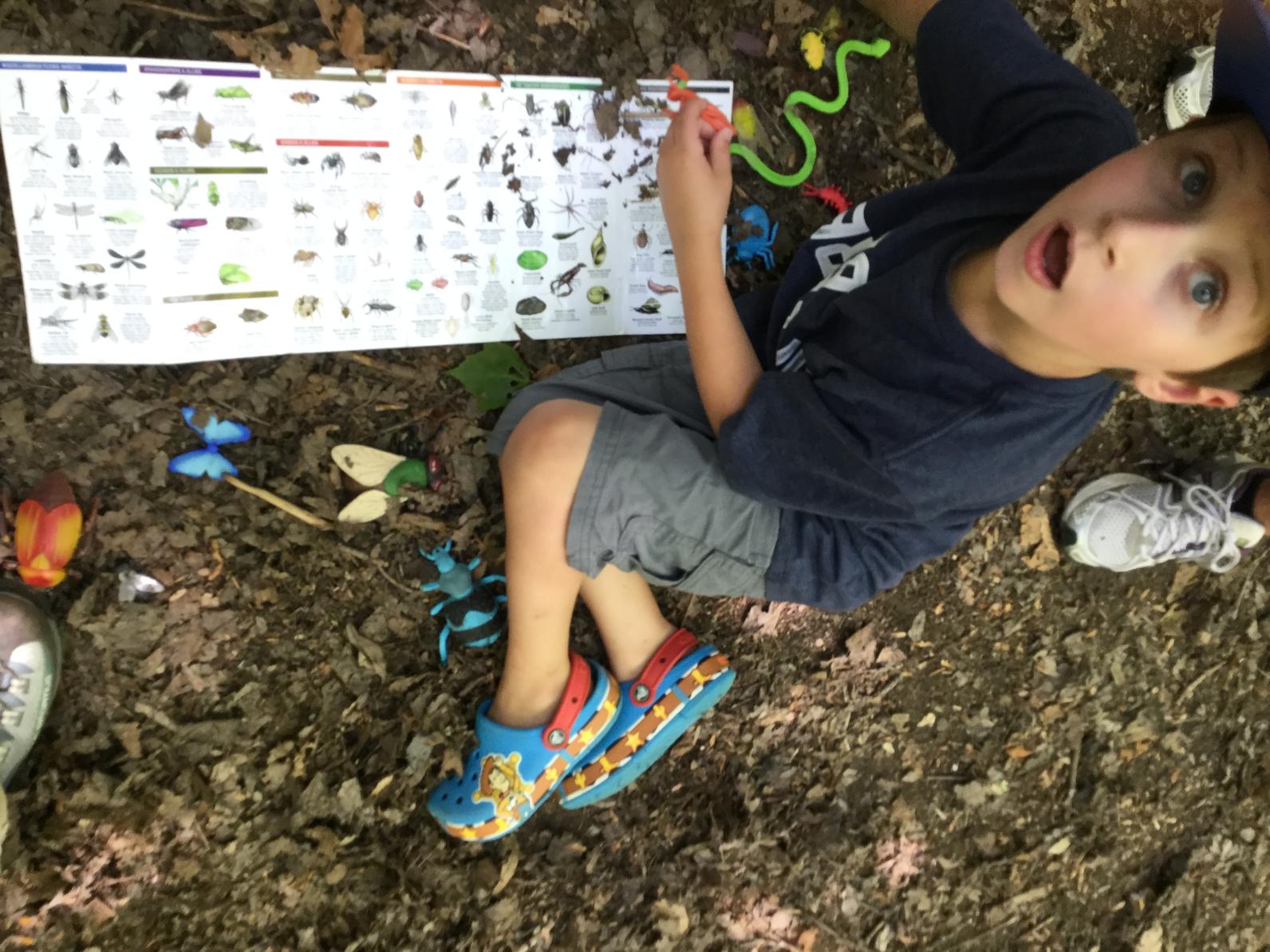
After the field we move to the brook and after talking water-safety and setting solid boundaries, I set the kids loose armed with scoop nets and yogurt cups.
They catch insect larvae, water striders, and try to find salamanders. Some students become quickly discouraged upon not instantly finding a frog. Others adopt the determination of a hunter stalking prey. It’s organized chaos – exactly the kind of exploration I want all kids to have in the woods.
The program ends too quickly for a formal debrief, yet as we make our way back, I hear kids comparing what they caught. “It was so fast! But I was faster.”
The next day, I’ll teach the program without supervision to second graders. I’m excited and feel confident – whatever happens, when we bring kids to Audubon, I know they will have a blast.
